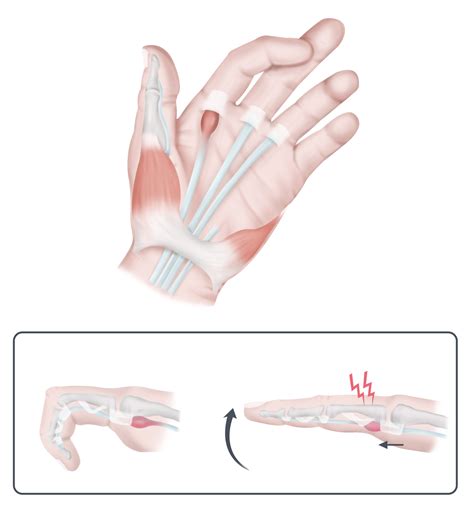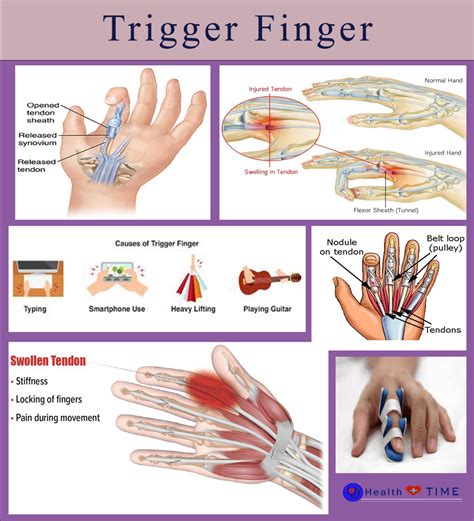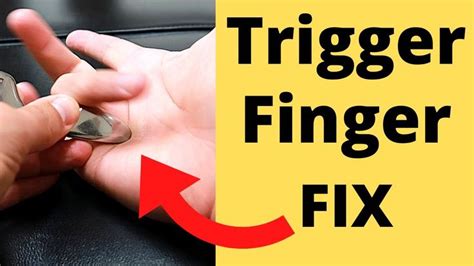Intro
Trigger finger, also known as stenosing tenosynovitis, is a common condition that affects the tendons in the fingers, causing pain, stiffness, and a clicking or snapping sensation when the finger is bent or straightened. This condition can be frustrating and debilitating, making everyday activities challenging. However, there are several ways to alleviate the symptoms and fix trigger finger. In this article, we will explore the importance of addressing trigger finger, its causes, and provide valuable tips to help you manage and overcome this condition.
Trigger finger can be caused by a variety of factors, including repetitive motion, trauma, or certain medical conditions such as diabetes or rheumatoid arthritis. The symptoms can range from mild to severe and may include pain or tenderness in the finger, especially when bending or straightening, swelling or redness in the affected area, and a clicking or snapping sensation when moving the finger. If left untreated, trigger finger can lead to chronic pain, stiffness, and limited mobility, making it essential to seek medical attention and explore treatment options.
Understanding the causes and symptoms of trigger finger is crucial in developing an effective treatment plan. By recognizing the signs and seeking medical attention, individuals can take the first step towards alleviating their symptoms and regaining control over their daily activities. In the following sections, we will delve into the world of trigger finger, exploring its causes, symptoms, and treatment options, as well as providing valuable tips and advice on how to manage and overcome this condition.
What is Trigger Finger?

Causes of Trigger Finger
The causes of trigger finger can be divided into two main categories: repetitive motion and underlying medical conditions. Repetitive motion, such as typing, playing a musical instrument, or using vibrating tools, can cause wear and tear on the tendons, leading to inflammation and narrowing of the tendon sheath. Underlying medical conditions, such as diabetes, rheumatoid arthritis, or gout, can also increase the risk of developing trigger finger.Symptoms of Trigger Finger

Treatment Options for Trigger Finger
Treatment options for trigger finger can range from conservative measures, such as rest, ice, and physical therapy, to more invasive procedures, such as corticosteroid injections or surgery. Conservative measures can help alleviate symptoms and promote healing, while more invasive procedures may be necessary to release the tendon and restore mobility.5 Tips to Fix Trigger Finger

- Rest and Ice: Resting the affected finger and applying ice can help reduce inflammation and alleviate symptoms. Avoid activities that aggravate the condition and apply ice for 15-20 minutes, several times a day.
- Stretching and Exercise: Gentle stretching and exercise can help improve mobility and reduce stiffness. Start with simple exercises, such as bending and straightening the finger, and gradually progress to more complex movements.
- Physical Therapy: Physical therapy can help improve mobility, reduce pain, and promote healing. A physical therapist can provide personalized exercises and stretches to help manage trigger finger.
- Corticosteroid Injections: Corticosteroid injections can help reduce inflammation and alleviate symptoms. These injections can be administered by a healthcare professional and can provide temporary relief.
- Surgery: In severe cases, surgery may be necessary to release the tendon and restore mobility. Surgery can provide long-term relief and improve functional ability.
Prevention and Management
Preventing trigger finger requires a combination of lifestyle modifications and ergonomic adjustments. Avoiding repetitive motion, taking regular breaks, and maintaining good posture can help reduce the risk of developing trigger finger. Ergonomic adjustments, such as using a keyboard tray or adjusting the height of a computer monitor, can also help reduce the risk of repetitive strain injuries.Conclusion and Next Steps

Final Thoughts
Trigger finger can be a frustrating and debilitating condition, but with the right treatment and lifestyle modifications, individuals can alleviate their symptoms and regain control over their daily activities. By prioritizing rest, ice, stretching, and exercise, individuals can promote healing and improve mobility. Remember, seeking medical attention and exploring treatment options is essential in managing and overcoming trigger finger.What are the symptoms of trigger finger?
+The symptoms of trigger finger can include pain or tenderness in the finger, especially when bending or straightening, swelling or redness in the affected area, and a clicking or snapping sensation when moving the finger.
What are the causes of trigger finger?
+The causes of trigger finger can be divided into two main categories: repetitive motion and underlying medical conditions. Repetitive motion, such as typing or playing a musical instrument, can cause wear and tear on the tendons, leading to inflammation and narrowing of the tendon sheath.
How can I manage trigger finger?
+Managing trigger finger requires a combination of lifestyle modifications and treatment options. Resting the affected finger, applying ice, and avoiding repetitive motion can help alleviate symptoms. Physical therapy, corticosteroid injections, and surgery may also be necessary to promote healing and restore mobility.
